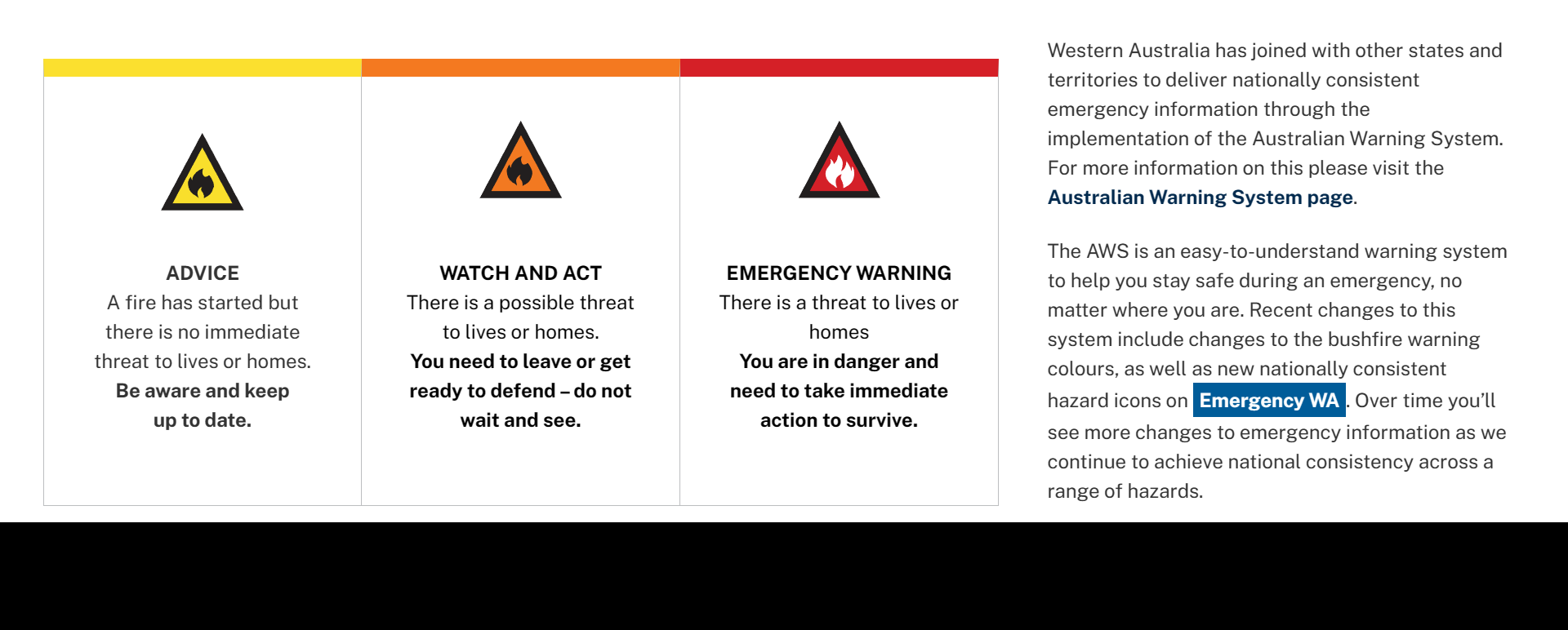Our school is located in a bushfire zone, due to the large area of bush at the back of our school and is on the Department of Education's Bushfire Register.
Our school rating is high.
The Department of Education require all schools who are on the Bushfire Register to have a bushfire plan. This plan is updated every year just before bushfire season and submitted to the department for approval.
This plan involves prevention: by maintaining a 20-metre asset zone and ensuring planting is away from the buildings, as well as actively monitoring the leaf litter around our school and removing it.
This plan also involves being prepared: by practising our bushfire evacuation to our on-site safer building locations, and ensuring our staff know how to manage a bushfire. emergency.
The plan involves education: by teaching the children what to do when there is a bushfire, not only at school but in other locations.
This plan involves practise: we are required to have two evacuation drills where we practise what to do in an emergency. Some of these drills are planned and are on our term planners, others are unplanned so that we can practice a potential real-life scenario by not knowing it is happening.
Bushfire Warning Levels:
The bushfire warning levels are:
Advice: A fire has started but there is no immediate danger. Stay alert and watch for signs of a fire. Be aware and keep up to date.
Watch and Act: A fire is approaching and there is a possible threat to lives or homes. You must start to act. If your plan is to leave, make sure you leave early. If your plan is to stay, check all your equipment is ready. Only stay and defend if you are mentally and physically prepared.
Emergency Warning: An out-of-control fire is approaching fast, and you need to take immediate action to survive.
Our plan, in the event of a bushfire emergency:
1- the school is notified by DFES and given instructions.
2- the school will sound an emergency siren 3 times, followed by a verbal notification over the PA system, to inform staff and students of the emergency. Staff will respond and follow our procedures.
3- Staff will move children to the designated onsite safer building location if it is an onsite invacuation. They will check all doors, windows, vents and skylights are closed and air conditioning is off. Here they will wait until further advice is received.
4- the school will send out a SMS to all parent contacts notifying them of the situation, following our communication tree.
5- the chief warden (Principal) and other wardens will conduct warden duties including assessing the risk, communicating key messages to all stakeholders, checking buildings to ensure staff and students are safe, providing first aid if required.
6- the chief warden will actively monitor the DFES warning system and provide updates to all key stakeholders. As well as wait for the emergency services to arrive or the incident controller to provide further information.
7- The school will remain in the safer building locations until they are notified it is safe for staff and students to leave the safe location.
Bushfire Information:
http://www.emergency.wa.gov.au/
Involve your children in emergency plans:
Children as young as four years of age can be involved in your home’s emergency plans. When children are placed at the centre of emergency planning, they are likely to feel more confident about the possibility of facing a fire or natural hazard.
Get started by involving your kids in planning for bushfire survival. The guide Making a Bushfire Survival Plan? Involve your Kids! by Dr Briony Tower provides tips for parents on what children can do when making and practising bushfire survival plans.
Make a plan with your family using Escape my House and using How to be safe if there is a fire at home.



